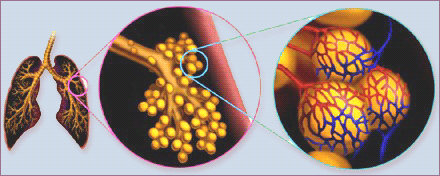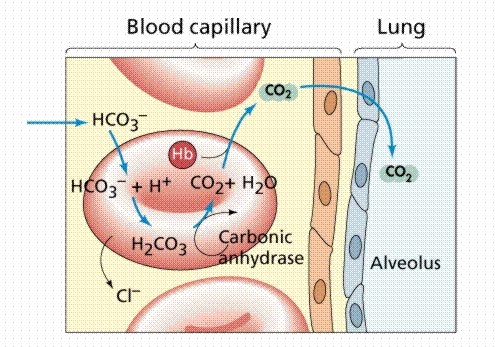
Human Breathing Mechanics
The Primary function of the respiratory system is to obtain oxygen for use by body’s cells & eliminate carbon dioxide that cells produce:
Each red blood cell contains 280,000,000 hemoglobin molecules. Hemoglobin is folded protein with four iron containing Haem groups. Each Haem unit binds with one oxygen unit. As a Hemoglobin unit becomes oxygenated its color changes to a brighter red. Collectively, this molecular color change is evident in the bright red color associated with arterial blood.

Capillary (a)

Capillary and Body Tissue
The exchange of gases (O2 & CO2) between the alveoli & the blood occurs by simple diffusion: O2 diffusing from the alveoli into the blood & CO2 from the blood into the alveoli. Diffusion requires a concentration gradient. So, the concentration (or pressure) of O2 in the alveoli must be kept at a higher level than in the blood & the concentration (or pressure) of CO2 in the alveoli must be kept at a lower lever than in the blood. We do this, of course, by breathing – continuously bringing fresh air (with lots of O2 & little CO2) into the lungs & the alveoli.